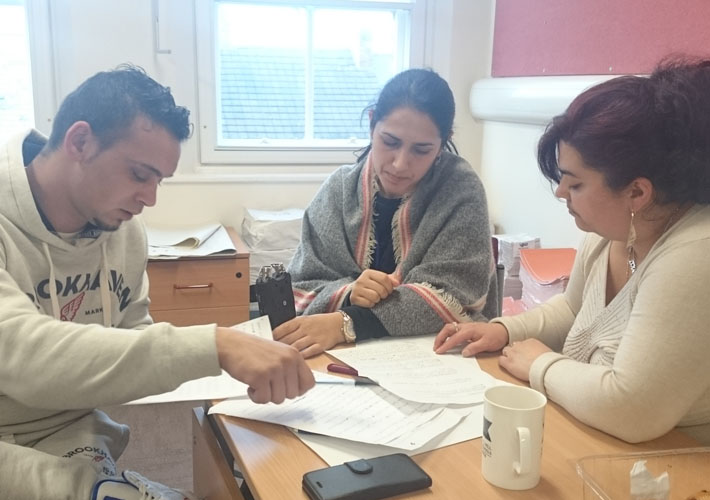WG2a Translation process Newcastle
The translation process (Newcastle)

Our first translation sessions at the school started by watching the English language animations for each character in each Enquiry. Then Zaneta (the community and language worker in Newcastle) translated each character’s script from English to Czech (very close to Slovak). After that, Zaneta worked with the parents to translate from Czech into a translanguaged form of East Slovak Roma and Slovak.
Since then, our process has become more efficient and Zaneta was able to translate the scripts from English to Czech in advance of each session. This meant that Laco and Marta (the parents) could focus on moving from Czech to Slovak and East Slovak Roma. It also meant that when the parents were working on separate character’s scripts, Zaneta had already read both full scripts so could more easily swap between the two (not take everything one sentence at a time).
The parents then recorded each sentence, or group of sentences, as an .MP3 file using an audio recorder. The parents also checked each other’s translation, to spot errors or agree changes. They made some of these changes to their written translanguaged scripts, and some changes when they read each sentence aloud as a practice prior to recording it.
The parents did not simply translate into East Slovak Roma. They took each unit of meaning and decided how to capture this in a combination of Roma and Slovak to make it the most accessible to the children, drawing on Slovak, for example, if children were more likely to recognise less commonly used (or non-existent) East Slovak Roma words. They did this following a clear steer from us, when we asked, ‘how would you say this at home’?
We are calling this process translanguation to capture both elements: translation and translanguaging. We are yet to determine the level of linguistic code-switching involved, and whether the grammar is predominantly one language or another, or is mixed. This will be an exciting research project in itself!


300px-120x66.jpg)
 (2)-161x67.jpg)


